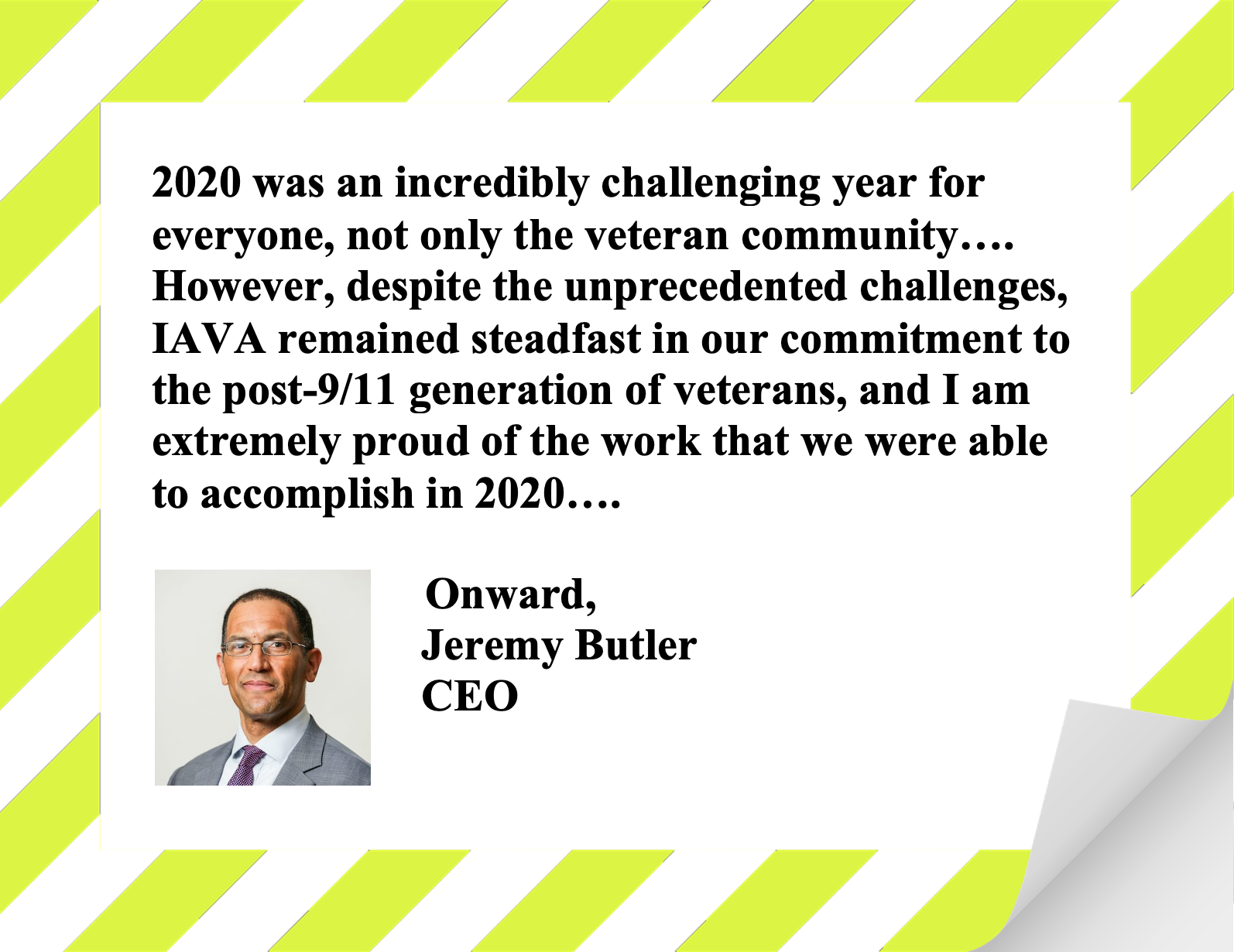IAVA's Policy Agenda for the 117th Congress
Support for Injuries from Burn Pits and Toxic Exposures
Support for Injuries from Burn Pits and Toxic Exposures
According to IAVA’s most recent member survey, 86% of IAVA members were exposed to burn pits during their deployments and over 88% of those exposed believe they already have or may have symptoms.
Year after year, the concern grows surrounding the health impacts of burn pits and toxic exposures in recent conflicts. Burn pits were a common way to get rid of waste at military sites in Iraq and Afghanistan, particularly between 2001 and 2010. The effect of burn pits is not just the chemicals in the smoke, but the particulate matter these men and women breathed in from the ashes and dust from the fires themselves.
There are other hazards beyond burn pits that occurred in Iraq and Afghanistan that may pose danger for respiratory illnesses including human waste, irritant gases, high levels of fine dust, heavy metals in urban environments, explosives and depleted uranium used in munitions. Furthermore, shortly after 9/11, U.S. servicemembers served at the Karshi-Khanabad Air Base (K2), a former Soviet base in Uzbekistan that had held chemical weapons enriched with Uranium. Thousands of veterans were exposed to these dangerous toxins at this base, and many now suffer from rare cancers and other ailments. A study was directed by a January 2021 executive order on impacts on those who served at K2 and should be submitted with findings to the president by the secretary of Defense.
Without due attention, this issue is becoming the Agent Orange of the post-9/11 era of veterans. It is past time that comprehensive action is taken to address the growing concern that these exposures have had severe impacts on veterans’ long term health.
Similarly, like burn pit toxic exposure and radiation exposure, blast exposure is both extremely dangerous to servicemember health and very difficult to detect without technology.
IAVA’s veteran care partners work with veterans who are suffering from the impacts of burn pits and toxic exposures. They can assist veterans with access to quality medical care, enrollment in the VA’s Burn Pit Registry, and advocacy on their behalf.
IAVA's Approach
Strengthen VA’s Tracking of Burn Pit and Toxic Exposures
Strengthen VA’s Tracking of Burn Pit and Toxic Exposures
Thanks to legislation fought for by IAVA and other VSOs, the VA established the Airborne Hazards and Open Burn Pit Registry to better understand the health outcomes of those exposed. The Registry was further strengthened by the passage of the IAVA-led Burn Pits Accountability Act. Yet, even that registry has its limitations. Many in the military and veteran community are still unaware the Registry exists. The Registry process is burdensome and frustrating to complete, and those who have registered see limited response. While the Registry was an essential first step in engaging the VA and veteran community in recognizing burn pits and other toxic exposures, there is still much that can be done to strengthen the Registry and go beyond its limited scope.
A report by the Institute of Medicine in 2011 found limited but suggestive evidence of a link between exposure and reduced lung function. Until now, the emphasis on this issue has been on research. But veterans are seeking care inside VA and in the community with illnesses and injuries they believe to be a result of their toxic exposures and yet VA is either not collecting information on their illnesses or injuries, or they are not sharing it. VA, DoD, and civilian health care providers must do a better job of supporting these veterans by ensuring that providers are tracking exposures, symptoms, and illness related to burn pits and other exposures in patients’ medical files and service records.
IAVA's Recommendations
- Encourage registrants of the VA’s Burn Pit Registry to get a VA physical following a service member’s or veteran’s addition to the Registry
- Integrate Burn Pit Registry submission with veterans’ VA medical file
- Train VA and Community Health Care providers on burn pit and toxic exposure signs and symptoms
- Implement mandatory screenings for toxic exposures for all veterans entering VA, similar to the screenings conducted for Military Sexual Assault
- Encourage DoD and VA to share information and data on burn pit and toxic exposures
IAVA's Policy Priorities
Select a topic from the list below to learn about IAVA’s policy recommendations for the 117th Congress.

